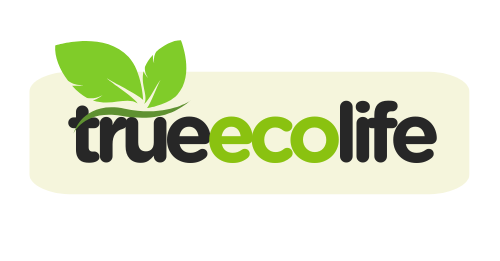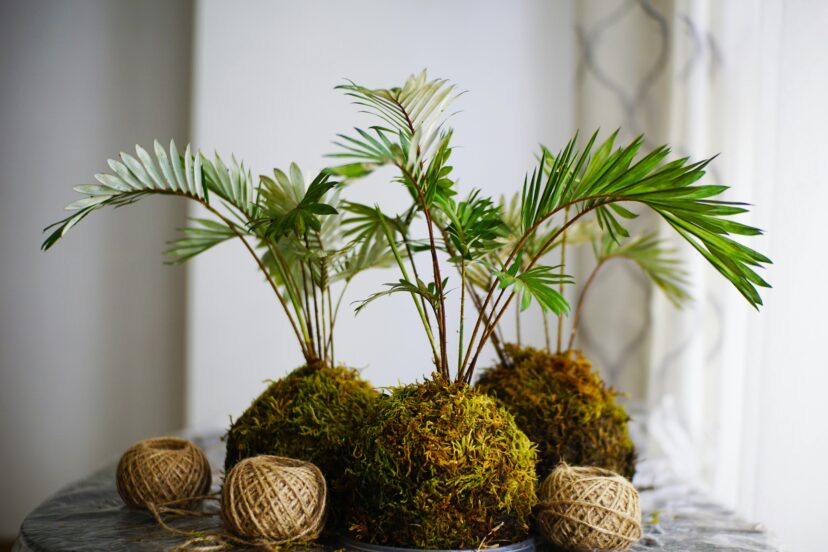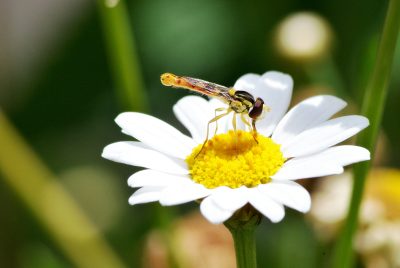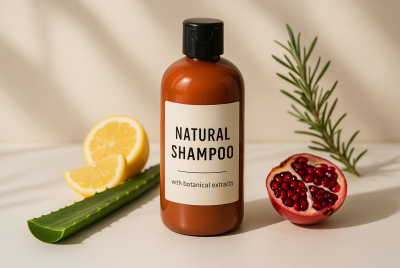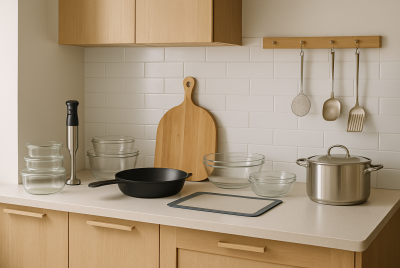Kokedamas: How To Incorporate Japanese Moss Balls As An Eco-Friendly Decor
We may earn a commission for purchases made using our links. Please see our disclosure to learn more.
Looking for a creative way to bring nature indoors while keeping things minimal and sustainable? Kokedamas, also known as Japanese moss balls, are the perfect solution. These stunning, soil-wrapped plants offer a unique alternative to traditional pots and serve as living sculptures for your home.
Incorporating kokedamas into your living space doesn’t just elevate your decor—it also connects you with centuries-old Japanese gardening practices. Let’s explore how kokedamas can transform your interior style while supporting an eco-friendly lifestyle.
What Are Kokedamas?
The word kokedama comes from the Japanese terms “koke” (moss) and “dama” (ball). It describes a plant with roots that are enclosed in a clay-and-soil mixture, covered with moss, and tied with thread. This plant ball can be hung from the ceiling to create a floating illusion or set on a decorative surface.
Kokedamas are a more laid-back, friendly version of the idea that has historically been associated with the art of bonsai. They are often referred to as “poor man’s bonsai” since they have the same visual impact as traditional bonsai trees without the expense or extensive pruning.
Why Kokedamas Make Great Eco-Friendly Decor
✅ Zero-Waste Appeal
One of the most attractive aspects of kokedamas is their sustainable nature. Since they don’t require pots, there’s no need for plastic or ceramic containers, reducing manufacturing waste. The moss and twine used in construction are biodegradable. Kokedama gardening is a small but meaningful way to live more sustainably—just one of the many examples of sustainability worth exploring.
✅ Space-Saving Greenery
For small apartments, offices, or compact homes, kokedamas offer a creative vertical gardening solution. Hanging them frees up counter space while adding a lush green element to the room.
✅ Mindful Gardening
Caring for kokedamas requires attention and presence, making them a meditative addition to your daily routine. You’re not just watering a plant—you’re nurturing a living form of art.
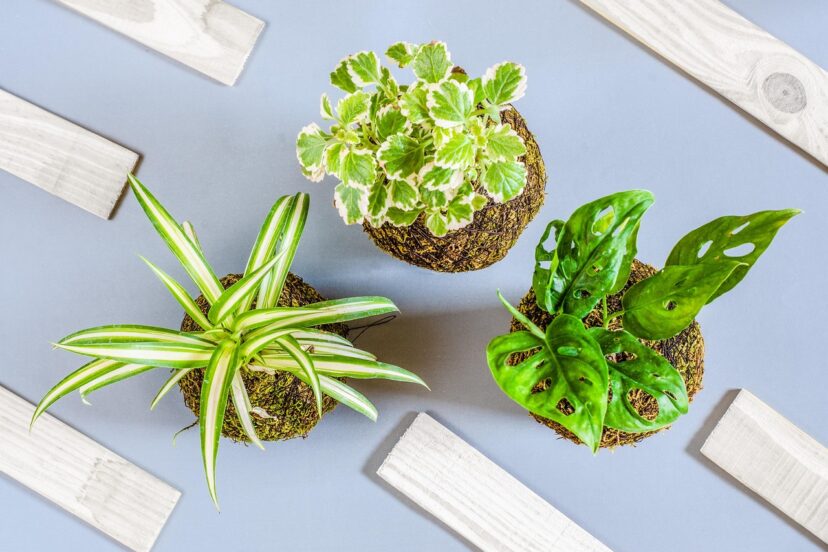
How to Style Kokedamas in Your Home
Whether you live in a tiny studio or a spacious home, kokedamas fit into any interior style—from modern minimalism to cozy boho. Here are some simple styling ideas:
Hanging Kokedamas for Small Spaces
Use clear fishing wire or jute string to suspend kokedamas at different heights in front of a sunny window. This setup creates a dreamy, floating garden feel while saving space.
You can also hang them in clusters to form a green curtain between rooms or above bathtubs for a spa-like vibe.
Tabletop Displays with Kokedamas
Place your kokedama on a shallow dish, wooden tray, or ceramic plate to create a striking centerpiece. Surround it with pebbles, candles, or crystals for added texture and mood.
Switch out seasonal plants or accessories to keep the look fresh and inspired throughout the year.
Zen Accents for Bathrooms and Balconies
Bathrooms naturally have high humidity, making them ideal for moisture-loving kokedamas like ferns or peace lilies. Place them on shelves or hang one from the shower rod (away from direct spray).
On balconies, kokedamas soften concrete surfaces and provide a calm, meditative vibe.
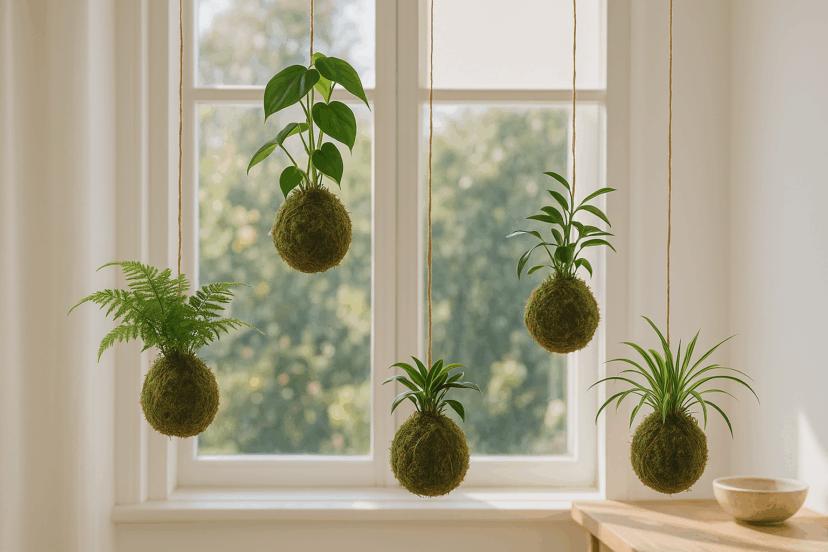
How to Care for Kokedamas
You don’t need a green thumb to care for a kokedama, but some gentle routine will keep your moss balls looking fresh and vibrant.
Watering Routine
Instead of pouring water into a pot, you’ll soak the entire kokedama in a bowl or sink. Let it sit for 10–15 minutes, then gently squeeze out excess water and allow it to drip dry before rehanging or displaying.
Frequency:
- Summer: every 2–3 days
- Winter: once a week or as needed
Lighting Needs
Most kokedamas prefer bright, indirect light. Direct sun can dry out the moss or scorch the leaves.
Recommended plants include pothos, philodendrons, ferns, spider plants, ivy, and orchids.
Humidity & Mist
If you live in a dry climate, mist your kokedama daily to keep the moss moist and the plant happy.
Trimming & Maintenance
Trim any dead leaves or overgrowth to keep the kokedama tidy. Replace moss and rebind with fresh twine every 6–12 months.
Recommended Kokedama Tools & Supplies
Here’s a beginner-friendly starter pack to create your own kokedamas or maintain existing ones:
- Organic Bonsai Soil Mix
A premium blend that helps form a stable ball around your plant’s roots. - Sphagnum Moss for Gardening
Soft, absorbent moss that retains moisture while giving the kokedama a clean look. - Natural Cotton Garden Twine
Biodegradable and strong—perfect for wrapping the moss tightly without harming the plant. - Plant Mister Spray Bottle
Keeps the moss fresh and humid, especially in dry indoor conditions. - Ceiling Plant Hangers with Hooks
Secure and stylish ways to hang your kokedamas wherever you like.
Each of these tools is simple to use, eco-conscious, and well-rated for indoor gardening projects.
The Science-Backed Benefits of Kokedama Gardening
Kokedama gardening is more than just an eco-friendly trend—it’s backed by science for both plant health and human wellness. The moss used in kokedamas serves as a breathable medium that supports root aeration, which helps reduce root rot and encourages robust growth. Moss also contains natural antimicrobial properties, offering protection from harmful pathogens. A comprehensive review on moss-pathogen interactions highlights these biological defenses, reinforcing the plant health advantages of this soil-free technique.
On the human side, creating and caring for kokedamas has been shown to offer significant therapeutic benefits. According to a 2023 study in Complementary Therapies in Clinical Practice, engaging in kokedama-making combined with aromatherapy helped participants achieve measurable stress relief, including lowered pulse rates and improved oxygen saturation. Similarly, research on kokedama’s impact on elderly well-being found that horticultural activities like this improved both emotional balance and physiological indicators of health.
Whether you’re nurturing plant roots or your own, kokedamas truly embody the concept of living art that heals.
Eco-Friendly and Decorative: A Perfect Match
Not only do kokedamas align with minimalist and sustainable living trends, but they also support emotional wellness. Studies have shown that tending to plants can reduce anxiety, boost mood, and increase indoor air quality.
Kokedamas are like living sculptures—each one unique, each one shaped by the hand that made it. Unlike plastic planters, they age gracefully and biodegrade naturally when you’re ready to move on.
Final Thoughts
If you’re looking for a low-maintenance, high-impact way to add greenery to your life, kokedamas are a perfect fit. They’re fun to make, easy to style, and a joy to care for.
You don’t need a ton of space or supplies to get started—just a love for nature and a willingness to try something new. Whether you’re a DIY enthusiast or a decor minimalist, kokedamas offer the charm of nature with a sustainable twist.
So next time you’re shopping for home decor or planning a weekend craft, skip the pots. Make a moss ball instead.
FAQs
1. How long do kokedamas last?
With proper care, kokedamas can thrive for one to two years. Some plant varieties can last even longer if rewrapped and maintained properly.
2. Can I make kokedamas with any plant?
Not all plants are ideal. Go for small, moisture-loving plants like ferns, ivy, orchids, pothos, or spider plants. Succulents don’t do well in the moist conditions required by kokedamas.
3. How many times should my kokedama be watered?
The plant and its surroundings determine how often it should be watered. You might need to soak your kokedama every two to three days during the warmer months. Once a week is generally plenty during the milder months.
4. Do kokedamas attract pests?
Not usually, but overwatering or placing them in a poorly ventilated area may attract mold or fungus gnats. Regular maintenance and correct watering practices will prevent issues.
5. What is the best place to buy kokedama supplies?
You can find everything you need on Amazon, or at local plant nurseries and craft supply stores. Online gardening specialty sites also offer curated kits for beginners.
